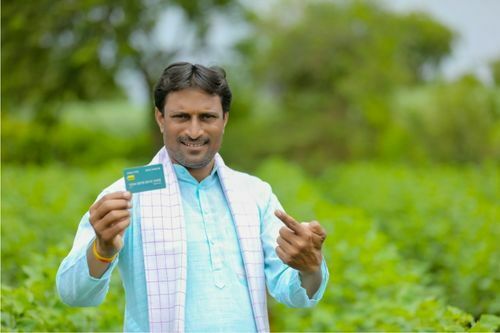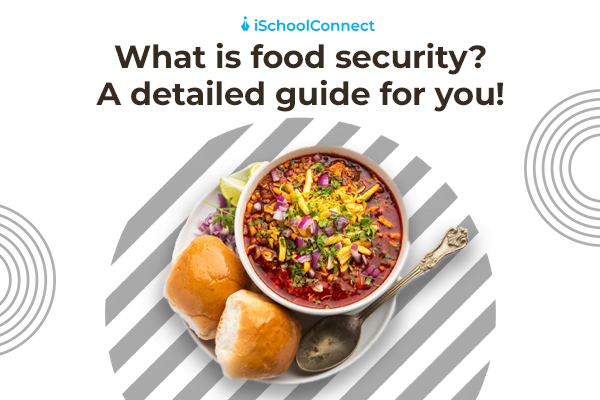Table of Contents
There are 7.9 billion people in the world, according to the 2011 census. Of these, 829 million people are suffering from hunger. They are deprived of nutritious food. The Global Hunger Index shows 117 countries that have the most hungry people. India has been ranked 102. The Indian government started an initiative on food security cards to eradicate this issue. The National Food Security card (NFSC) is considered one of the largest schemes for poor and hungry people. It covers 67% of the population in India, out of which 75% are rural, and 50% are urban people.
Let’s know more about this scheme.
What is a National Food Security card?
The National Food Security card is also known as the food security ration card. It is a legal document on which citizens can get rice, sugar, wheat, LPG cylinders, and other essential food necessities at a subsidized price. It is provided under the National Food Security Act, 2013.
The cardholder can buy the essentials at any ration shop in the country. They will receive the amount that is available under the scheme.
National Food Security Act (NFSA), 2013
The Indian constitution provides fundamental human rights to its citizens in Article 21. Food, one of the necessities, isn’t recognized as an individual right in the constitution. It comes under the ‘right to live.’
Before the NFSA, the government dealt with food-related issues under the Public Distribution System (PDS) and Targeted Public Distribution System (TPDS). The Union Cabinet cleared the National Food Security bill on 4th July 2013. Over 67% of the population benefited from this act.
The main objective of this act is to achieve the United Nations’ objective of ending hunger by the year 2030.
Benefits of National Food Security card

can be linked with AADHAR or the bank account of the cardholder.
The preamble of the food security act says that it will provide food and nutritional security by ensuring access to an adequate quantity of quality food at an affordable price. This card covers the benefits that used to be supplied under the Public Distribution System (PDS) and Targeted Public Distribution System (TPDS). These benefits are as follows.
- It provides highly subsidized food grains to people below the poverty line (BPL).
- It provides nutritional meals and maternity benefits to pregnant and lactating mothers.
- Children below the age of 14 are also included in this act. They are provided mid-day meals in schools run by the government.
- It benefits the family’s eldest daughter, considering her the head of household on the ration card.
- The State and district provide Grievance Redressal Mechanism to the cardholders under the act.
- It provides a food security allowance to the people who cannot receive food per the scheme.
The eligibility criteria
The NITI Ayog of the Central Government defines the state-wise coverage of the eligible households for food security cards. The state government or union territories can create their criteria to identify such households. The official website displays the list of these eligible households. The criteria for eligibility are as follows.
- The applicant shouldn’t be the existing holder of a food security card.
- They must belong to the financially disadvantaged section of society.
- The applicant must be married or have a family.
- They should contain a temporary or an expired ration card.
Documents required for application

To apply for the card, you must submit simple documents with the application form. The list of these documents is as follows.
| 1 | Government identification | Adhar card or PAN card |
| 2 | Residential proof | Rent agreement or electricity bill |
The ONORC initiative
ONORC stands for the ‘One Nation One Ration Card’ initiative of the Indian government. This scheme was launched as a pilot project for four states on 9th August 2020. After finishing 3 years, it has now become a nationwide initiative. Assam was the recent State to implement this scheme in June 2022.
This scheme enables the benefits of food security cards to the migrant workers. These migrant workers can now buy food grains like rice and wheat at subsidized prices in ration shops anywhere in the country. The apex court had directed the State Governments to arrange community kitchen services to feed migrant workers during the pandemic.
The white ration card was given to the migrant workers. They can use this card anywhere in the country. During the period of lockdown, this scheme helped several migrant workers survive. The implementation of this scheme still needs more effort to achieve its goal.
Key takeaways
- The National Food Security Card has proven more effective than the PDS and TPDS.
- The food security card provides food grains at INR 3 to 5 per kg. They can get over 35kgs of food grains per month.
- The ‘One Nation One Ration card’ scheme is implemented in 20 states.
We hope you find this article helpful. Write to us your comments. Click here to read more such articles.
Liked this blog? Read next: Food Science | What does pursuing this course entail?
FAQs
Q1. Who is eligible for a white ration card in India?
Answer: Families with an annual income less than INR 1 lakh are eligible for a white ration card.
Q2. What are the three components of food security?
Answer: Availability, access, and consumption are the three components of food security.
Q3. How can I get a food security card in Telangana?
Answer: You will need to visit and apply at the MeeSeva portal of the Government of Telangana.






